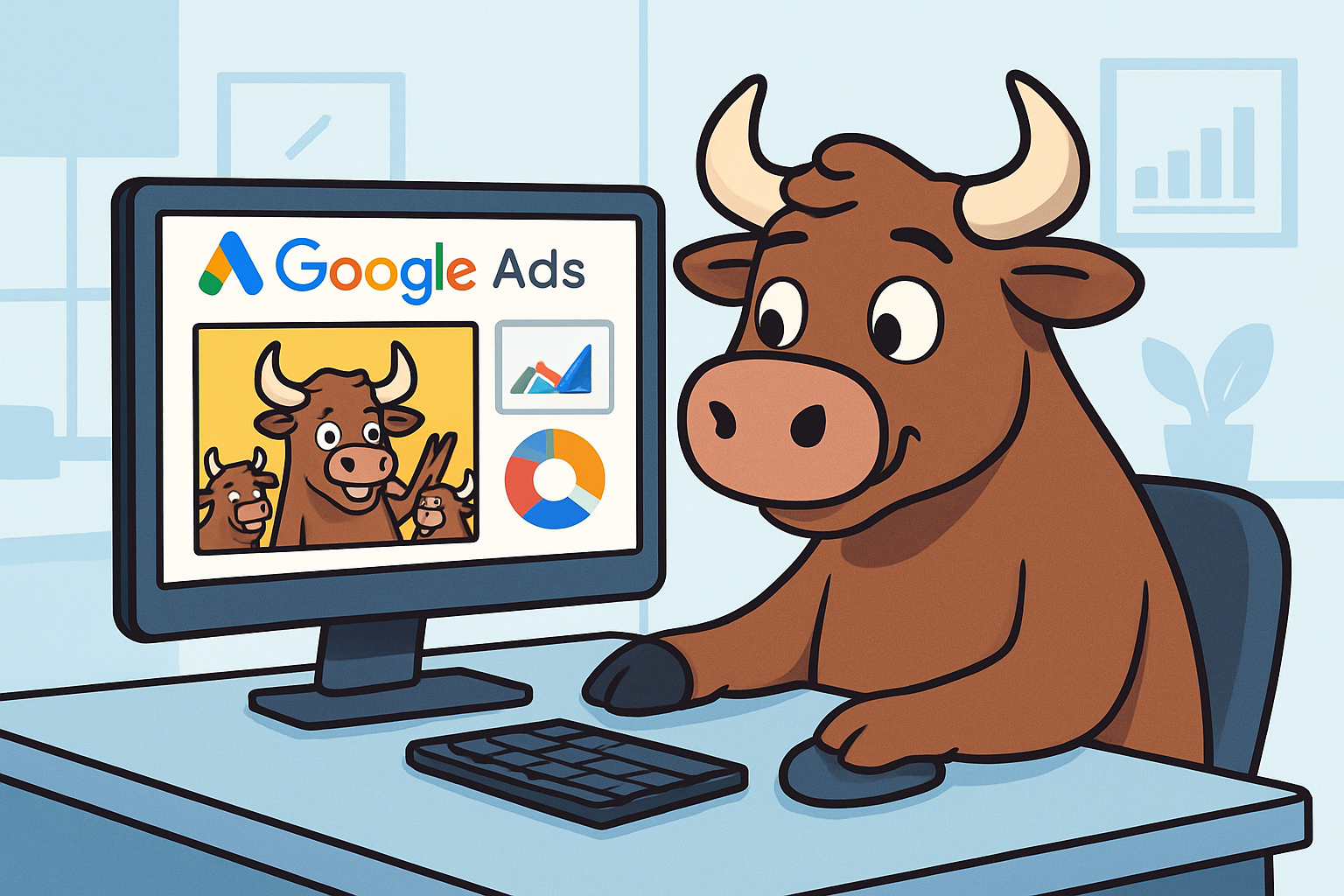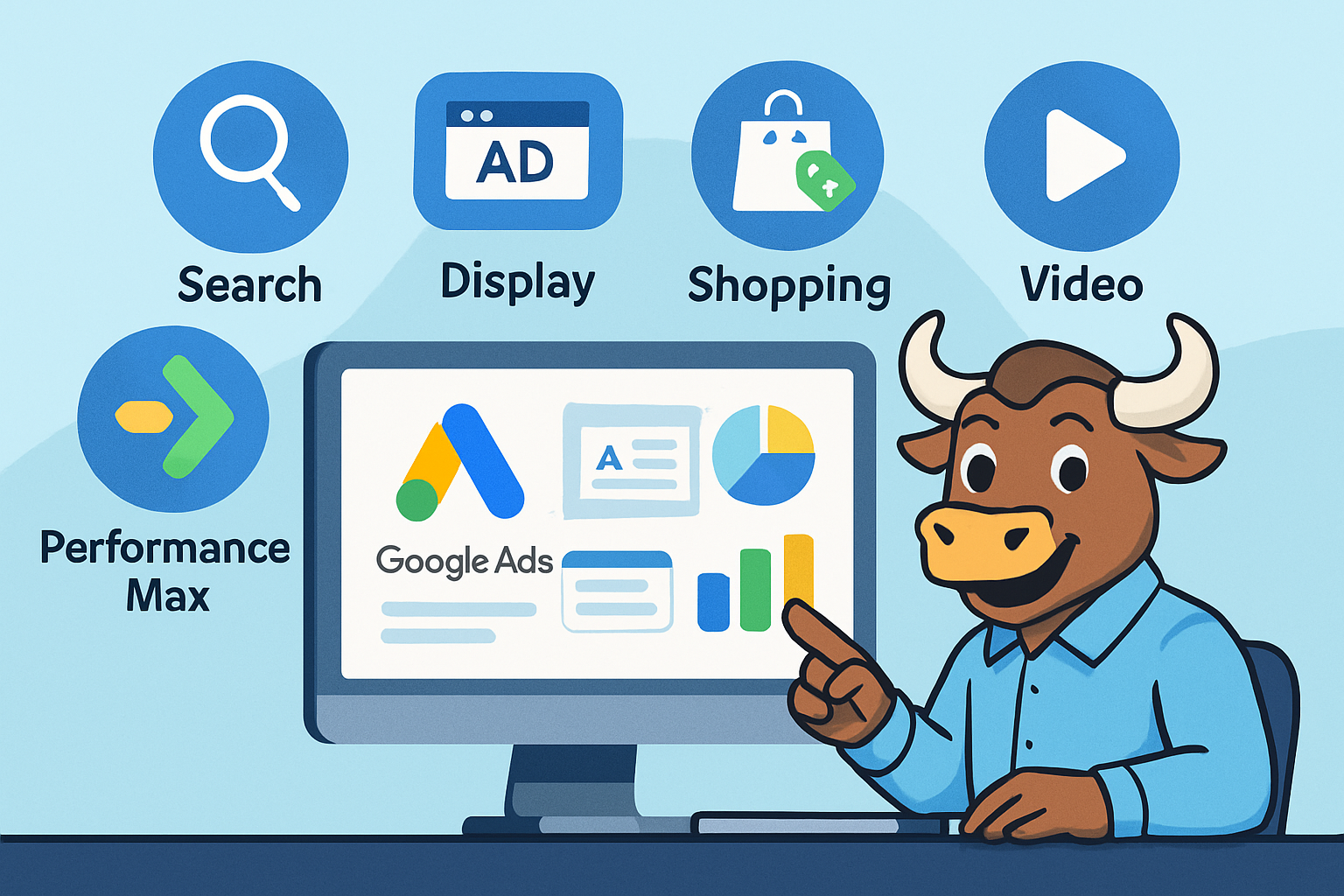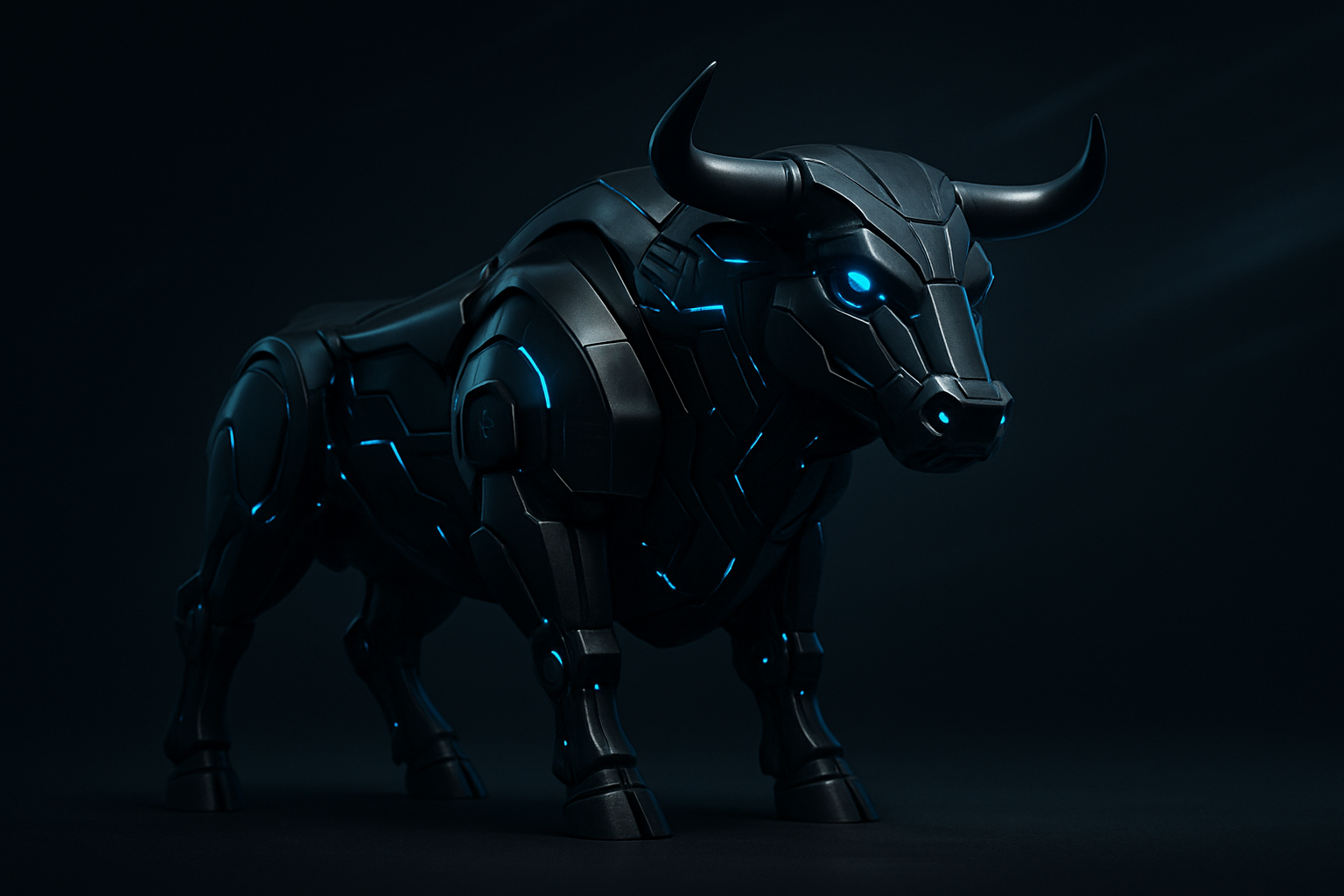If you’re just starting with Google Ads, one of the first (and most confusing) decisions is: Which campaign type should I choose? There are several types of ads on Google: Search, Display, Performance Max, Shopping, Video, and Brand campaigns. Each one serves a different purpose, and picking the wrong one can lead to wasted spend, poor data, and slower results.
This guide breaks down the most common Google Ads campaign types, when to use them, and how to match them to your budget and goals.
The Short Answer
For most businesses, a Search campaign is the best place to start. It connects you with people actively searching for your product or service, giving you the best shot at quick, measurable results. From there, you can expand into Performance Max for scale, add Display or Video for awareness, and run a Brand campaign to protect your name.
Why Campaign Type Matters
Google Ad(Words) campaign types all have different strengths. Choosing the right one first helps you:
-
Match ad type to user intent
-
Control budget efficiency - Do you know the right budget for you?
-
Collect conversion data faster
-
Support both short- and long-term goals
Starting too broad can stretch your budget thin. Starting with the right campaign builds a foundation for scale.
Google Ads Campaign Types Explained
Here’s a detailed breakdown of the most common Google Ads campaign types in 2025 and how to use them.
1. Search Campaigns
Text ads that appear when someone searches keywords you target.
-
Best for: Lead generation, services, high-intent buyers
-
Why start here: Captures demand that already exists. People are literally searching for what you sell.
Pros:
-
High intent means higher conversion rates
-
Easy to measure ROI
-
Works for almost every industry
Cons:
-
Expensive in high-CPC industries like legal or HVAC
-
Requires ongoing keyword management such as negatives and match types
2. Display Campaigns
Visual banner ads shown across Google’s Display Network of millions of websites.
-
Best for: Brand awareness, remarketing, staying top-of-mind
-
Caveat: Display traffic is often low intent
Pros:
-
Wide reach for brand exposure
-
Strong for remarketing to past visitors
-
Cost per click is usually cheaper than Search
Cons:
-
Low conversion rates without strong targeting
-
Easy to waste money on placements if not managed carefully
3. Performance Max Campaigns (PMax)
An all-in-one campaign type that runs across Search, Display, YouTube, Maps, and Gmail. Uses Google’s machine learning to optimize delivery.
-
Best for: Businesses with multiple conversion goals or e-commerce stores
-
Why add it: Can scale quickly after Search has built some data
Pros:
-
Access to every Google Ads inventory source in one campaign
-
Automated targeting and bidding
-
Good for scaling results
Cons:
-
Limited visibility into which channels are driving conversions
-
Can spread budget too thin if you don’t feed it strong creative and audience signals
Note that PMAX campaigns work the best when they have a good amount of historical data to use within your account. I would not recommend using this for a brand new account.
4. Shopping Campaigns
Product ads with images, prices, and descriptions shown in Google Shopping results.
-
Best for: E-commerce businesses with product catalogs
-
Note: Works especially well with Performance Max for e-commerce growth
Pros:
-
High intent because shoppers see price and product before clicking
-
Great for retailers and direct-to-consumer brands
-
Can scale revenue quickly when paired with optimized product feeds
Cons:
-
Requires a product feed in Google Merchant Center (not a big deal)
-
Not useful for service-based businesses
5. Video Campaigns (YouTube)
Ads that run before, during, or after YouTube videos.
-
Best for: Awareness, branding, remarketing with strong creative assets
Pros:
-
Engaging format for storytelling
-
Great for top-of-funnel awareness
-
Powerful for remarketing when paired with Search
Cons:
-
Requires strong video assets to perform well
-
Lower direct conversion rates compared to Search
6. Branding Campaigns (Bid on Your Own Name)
A special type of Search campaign where you bid on your business name and branded keywords.
-
Best for: Any business with competitors bidding on their brand or with search volume for their name
Pros:
-
Protects your brand against competitor ads
-
Low cost and high CTR
-
Reinforces credibility in search results
Cons:
-
Some business owners resist paying for their own name even though competitors often do it

Factors That Influence Which Campaign to Choose
-
Business Goals
-
Need fast leads? Start with Search.
-
Need awareness? Add Display or Video.
-
Need scale? Layer in Performance Max.
-
-
Industry Competition
-
High CPC industries like legal, insurance, or home services often need higher budgets.
-
Lower-CPC industries like local retail or niche e-commerce can start smaller.
-
-
Sales Cycle
-
Short cycles: Search works best.
-
Long cycles: need Display or Video remarketing to nurture leads.
-
-
Creative Assets
-
If you have video: PMAX, YouTube, and Video campaigns make sense.
-
If you only have text or images: stick to Search, Display, and Shopping.
-

Recommended Starting Point by Business Type
-
Local Service Business: Search + Brand campaign, add Display remarketing
-
B2B Lead Generation: Search first, then Performance Max once enough conversion data is collected
-
E-commerce: Shopping + Performance Max, with branded Search protection
-
National Service Provider: Search + Performance Max, then add Video for awareness
I'd recommend PMAX for most campaigns as long as it makes sense with your company's goals.
Why Starting Too Broad Can Hurt
-
Performance Max without enough data spreads budget thin
-
Display campaigns alone rarely generate strong conversions
-
Skipping branded campaigns leaves the door open for competitors to steal clicks
Bottom Line
If you’re new to Google Ads, start simple. Launch a Search campaign first to capture high-intent traffic, then add a Brand campaign to protect your name. From there, expand into Performance Max for scale, Display for remarketing, and Video for awareness.
Choosing the right Google Ads campaign type from the beginning helps your budget go further and sets you up for long-term success.
If you need help creating, managing, or reviewing your Google Ads account, feel free to contact Mike here!




